

Guidelines for submitting articles to Hacienda Riquelme Golf Resort Today
Hello, and thank you for choosing Hacienda Riquelme Golf Resort.Today to publicise your organisation’s info or event.
Hacienda Riquelme Golf Resort Today is a website set up by Murcia Today specifically for residents of the urbanisation in Southwest Murcia, providing news and information on what’s happening in the local area, which is the largest English-speaking expat area in the Region of Murcia.
When submitting text to be included on Hacienda Riquelme Golf Resort Today, please abide by the following guidelines so we can upload your article as swiftly as possible:
Send an email to editor@spaintodayonline.com or contact@murciatoday.com
Attach the information in a Word Document or Google Doc
Include all relevant points, including:
Who is the organisation running the event?
Where is it happening?
When?
How much does it cost?
Is it necessary to book beforehand, or can people just show up on the day?
…but try not to exceed 300 words
Also attach a photo to illustrate your article, no more than 100kb

The Municipal Aeronautical Museum, Los Alcazares
This is opposite the Los Alcázares Burguete Air Base
This interesting museum is located in a distinctive 1930s building, opposite the historical airbase in Los 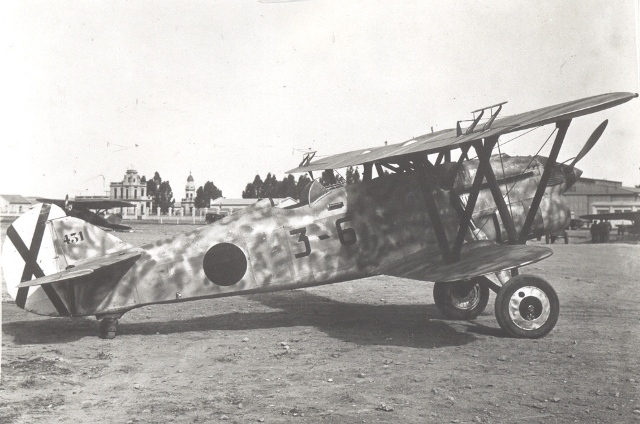 Alcázares.
Alcázares.
The museum opened in 1999 to honour the history of the airbase, built in 1915, at a time when the military potential of aircraft was first being developed and exploited on a large scale.
This base was the first Spanish seaplane base ever built and its installations remain hauntingly intact, evoking an era when the Mar Menor throbbed with the engines of seaplanes and military training planes, assuming increasing importance as Spain rumbled towards Civil War.
 The museum includes photographic and audio visual footage, showing the base in action, along with models of various aircraft, aerial photographs, helmets, weapons, aircraft propellers, guard posts, anti-aircraft guns and various objects all relating to to the history of the Spanish military air force.
The museum includes photographic and audio visual footage, showing the base in action, along with models of various aircraft, aerial photographs, helmets, weapons, aircraft propellers, guard posts, anti-aircraft guns and various objects all relating to to the history of the Spanish military air force.
There are also two small salons with audio visual film in Spanish detailing activities during the Spanish Civil War, including actual film of bombing raids taking place over the Mar Menor.
The actual building which houses the museum was originally built as a transit house for the poor and those passing through the municipality in an era when there was high unemployment and many seeking work.
Entrance is free and the visit takes around 20-30mins
It is also possible to combine with a visit to the actual Military base close by, however these popular tours  must be booked in advance and are arranged for the 1st Saturday of every month, commencing at 11am. The tour can be booked by sending an e-mail to laecocultural@gmail.com stating how many people there are in your party, what date you wish to visit stating your Tel Number, e-mail address etc. Up to 30 people can be accommodated on each tour, but it must be noted that the visits are currently only available in Spanish. It could be possible for a good sized group to perhaps take their own translator along to translate, but this would have to be arranged in advance with the organisation running the museum.
must be booked in advance and are arranged for the 1st Saturday of every month, commencing at 11am. The tour can be booked by sending an e-mail to laecocultural@gmail.com stating how many people there are in your party, what date you wish to visit stating your Tel Number, e-mail address etc. Up to 30 people can be accommodated on each tour, but it must be noted that the visits are currently only available in Spanish. It could be possible for a good sized group to perhaps take their own translator along to translate, but this would have to be arranged in advance with the organisation running the museum.
Please note, that this is still an active military base so special permission has to be sought for groups to visit, so please allow plenty of time if hoping to arrange a visit for a group.
The Municipal Aeronautical Museum, Los Alcázares
Address: Avenida. La Libertad, 37 Los Alcázares
Telephone: 968 582 107
Entrance is free and the visit to the Museum takes around half an hour.
Open Monday-Saturday from 10:00 to 14:00
The information below has been translated in collaboration with the air museum and is a faithful translation of the information boards in the museum. This text can be printed out to take along to the museum for non-Spanish speakers, but may NOT be reproduced elsewhere on the web. The images are also used with the permission of the museum and may not be reproduced.
I. THE BEGINNINGS OF SPANISH MILITARY HYDRO-AVIATION
The first seaplane flight ever was made in 1910 by Frenchman Henri Fabre, and from that moment on it was considered indispensable to include this type of aircraft in the fledgling military aviation operations of all 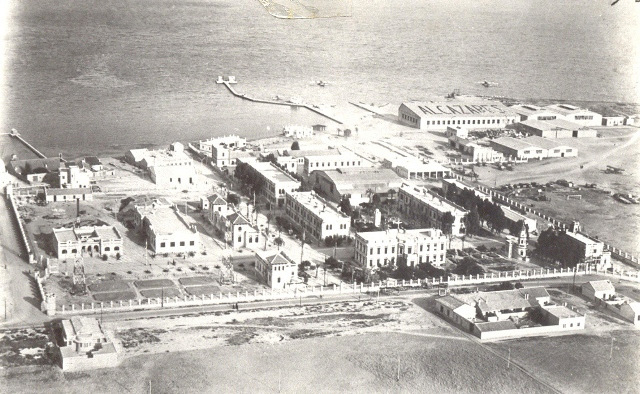 nations.
nations.
Spain has over 3,000 kilometres of coastline and at the time it was clear that military operations would soon become inevitable in Northern Africa. Consequently, it was assumed from the start that the importance of seaplanes would be fundamental.
At the end of 1914 the war ministry appointed Colonel Pedro Vives y Vich, the director of the Military Aeronautical Service, in charge of the search to find the best location for a seaplane base. In order to do so he travelled the length of the Mediterranean coast from Algeciras in Cádiz to Port Bou in Girona, and having done so he reported to the Ministry that the ideal location for Spain’s first seaplane base was Los Alcázares. Located half-way along the western shore of the Mar Menor, this location offered perfect natural features, with few obstacles, tranquil sea conditions, shallow water and a large number of days with clear skies during the year.
In May 1915 work began to build the new aerodrome, starting with hangars, workshops and seaplane docks, and by September of the same year the first planes arrived from the USA. These were six Curtiss JN-2 seaplanes, and in November 1915 Albert J. Engel, a Curtiss Aeroplane Co.pilot, made the first test flights.
 On 12th December 1915 cavalry lieutenant Roberto White Santiago made the first flight in a Spanish military seaplane, and from that moment on the place of Los Alcázares was assured as one of the most important aerodromes in the history of Spanish military aeronautics in the first half of the 20th century.
On 12th December 1915 cavalry lieutenant Roberto White Santiago made the first flight in a Spanish military seaplane, and from that moment on the place of Los Alcázares was assured as one of the most important aerodromes in the history of Spanish military aeronautics in the first half of the 20th century.
During the early years, from 1916 to 1921, the functions of Los Alcázares were twofold: the base was home to the “Escuela de Hidroaviones”, or Seaplane School, and the Pilots’ Basic Training Centre (1920-1921).
II. THE AERIAL COMBAT AND BOMBING SCHOOL
This is without a doubt the most important phase in the history of the Los Alcázares aerodrome. In 1921 Captain Alfredo Kindelán founded the Combat and Aerial Bombing School here, making the aerodrome one  of the most important in the whole of Spain. Most of the pilots taking part in this heroic era of the country’s history trained here, following a modern training program which combined theoretical studies and practical training in each of the two specialities of gun marksmanship and bombing. Among the esteemed military flyers giving the training were Emilio Herrera, Mariano Barberán, Warleta de la Quintana, Arias Salgado y de Cubas, Riera Peña, Melendreras Sierra and Pardo Gracía.
of the most important in the whole of Spain. Most of the pilots taking part in this heroic era of the country’s history trained here, following a modern training program which combined theoretical studies and practical training in each of the two specialities of gun marksmanship and bombing. Among the esteemed military flyers giving the training were Emilio Herrera, Mariano Barberán, Warleta de la Quintana, Arias Salgado y de Cubas, Riera Peña, Melendreras Sierra and Pardo Gracía.
The range of practical exercises included the novel and economical “cabinet bombing”, in-flight shooting practice using fixed and moving targets, and live bombing raids on the island of La Perdiguera.
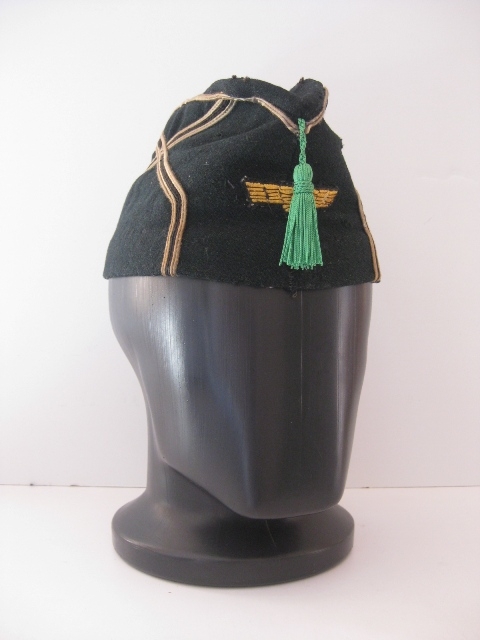 The list of directors of the centre includes some highly prestigious names. Alfredo Kindelán, a pioneer of military flying, was head of the aerodrome from 1922 to 1923, and among his successors was the first Spanish pilot Prince Alfonso de Orleans y Borbón, who was in charge in 1926 and 1927.
The list of directors of the centre includes some highly prestigious names. Alfredo Kindelán, a pioneer of military flying, was head of the aerodrome from 1922 to 1923, and among his successors was the first Spanish pilot Prince Alfonso de Orleans y Borbón, who was in charge in 1926 and 1927.
Ramón Franco Bahamonde, the hero of the “Plus Ultra” flight, was Chief in Command of Aeronautics and director at Los Alcázares in 1928 and 1929, and Captain Ricardo Burguete, a hero in the Moroccan war, took over between 1931 and 1933. On his death he gave his name to the aerodrome, and among his successors was Captain Juan Ortiz, a man of vital importance in the history not only of the aerodrome but also of the town of Los Alcázares during the Spanish Civil War.
When the Aviation Arm of the armed forces was formed in February 1935 the Burguete Aerodrome of Los Alcázares was of importance in two main areas:
1 – Within the troops training service with the shooting and bombing school, the Y-2 advanced training squadron, Seaplane Group Nº 6, two DornierWal squadrons and the Service Unit.
2 – Within the materials service, where the workshops of Los Alcázares were registered as a regional deposit for the South-East.
GREAT FLIGHTS
The 1920s and 1930s saw great advances in the field of aviation, and tales abounded of long-distance flights and prodigious aeronautical adventures. Between the wars there were important innovations in aeroplane 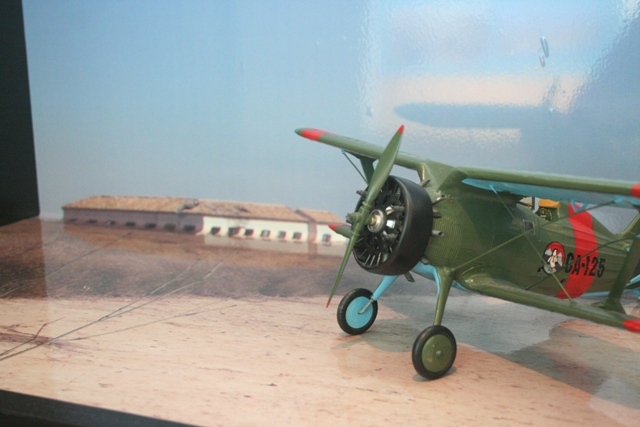 design, ground infrastructures were developed in order to make flying a real possibility, airports were built, international communication codes were established… in short, flying was a glamour business at this time, and aviation was living its Golden Age.
design, ground infrastructures were developed in order to make flying a real possibility, airports were built, international communication codes were established… in short, flying was a glamour business at this time, and aviation was living its Golden Age.
It was against this backdrop that the aerodrome of Los Alcázares was a port of call for many of the great flights, both domestic and international. The facilities were well-known throughout Europe on account of its strategic location, its remarkable seaplane base and its significant infrastructures. These included large hangars, workshops, a radio telegraphy station and an airfield measuring 1000 metres by 600 metres, and it should not surprise us that it was on the route map of many aeronautical expeditions. These included the following:
27th May 1916 – Cuatro Vientos (Madrid) to Los Alcázares
Four aircraft took off from Cuatro Vientos to fly in squadron formation to the Los Alcázares aerodrome. Only the Barrón Flecha plane, powered by a 100 horsepower Mercedes engine and piloted by Prince Alfonso de Orleans, managed to complete the flight, travelling at an average speed of 123 km/h.
May 1928 – The “Crociera del Mediterraneo Occidentale”
Nationality: Italian
Planned itinerary: Orbetello (Italy) - Los Alcázares - Orbetello
Distance: approximately 2,800 km.
Planes: over 60 Savoia Marchetti seaplanes, model S.55, S.59 and S.62
Commanding officers: General De Pinedo and Italo Balbo, under-secretary of the Italian Aeronautics Ministry.
21st to 29th June 1929 – The flight of the Dornier 15/16.
Nationality: Spanish
Planned itinerary: Los Alcázares – The Azores - Halifax or Terranova (Canada) – The Azores - Galicia
Distance: approximately 12,000 km
Plane: Dornier Do J Wal seaplane (M-MWAP)
Crew: Commander Ramón Franco, Captain Eduardo González Gallarza, Captain Julio Ruíz de Alda, mechanic Sergeant Modesto Madariaga
Aim: to beat the world duration and distance records for seaplane flights.
17th December 1930 to 15th January 1931 – The First “Crociera Aerea Atlantica”
Nationality: Italian
Planned itinerary: Orbetello (Italy) – Los Alcázares (Spain) – Kenitra (Morocco) – Villa Cisneros (Western Sahara) – Bolama (Guinea –Bissau) – Porto Natal (Brazil) – Bahía (Brazil) – Río de Janeiro (Brazil).
Distance: 10,350 km.
Planes: SavoiaMarchetti S.55ª seaplanes
Commanding officers: Italo Balbo, Italian Minister for Aeronautics, Giuseppe Valle, leading politician, Lt-Colonel Umberto Maddalena.
Aim: to complete the first transatlantic formation flight.
8th November to 18th December 1933 - The “Escuadra Negra”
Nationality: French
Planned itinerary: Istres (France) – Perpignan – Los Alcázares – Rabat – Adrar – Gao – Bamako – Dakar - Bangui (Central African Republic) – Istres.
Distance: approximately 25,000 km
Planes: Potez 25 T. O. E.
Commanding officers: General Vuillemin, head of Aviation in Morocco, Lt-Colonels Bouscat, Rignot and Girier, Captain Pelletier d’Oisy.
The facilities at the Los Alcázares aerodorome were also used by planes participating in the night flight around Spain (September 1927), the national consistency challenge (June and July 1930), the tour of Spain for military aerial patrol planes (1932, 1933, 1934, 1935), the tour of Spain for seaplanes (June 1934) and many other challenges and events.
On occasions the aerodrome was opened to civilian traffic: it was used a stop-off point on the postal route set up by the Societá Anonima di Navegazione Aerea (S.A.N.A.) between Genoa and Gibraltar in 1930, helping to connect with the transatlantic ships of Lloyd Sabaudo.
In addition it was called into use as an emergency stop-off point on the Latécoère routes which connected Alicante to Oran and Algiers.
III. THE BURGUETE AERODROME DURING THE SPANISH CIVIL WAR (1936-1939)
The Burguete aerodrome in Los Alcázares played a significant part in Spain’s internal conflict. Its role was vital in dismantling the military coup which was instigated in the neighbouring sea and air base at La Ribera 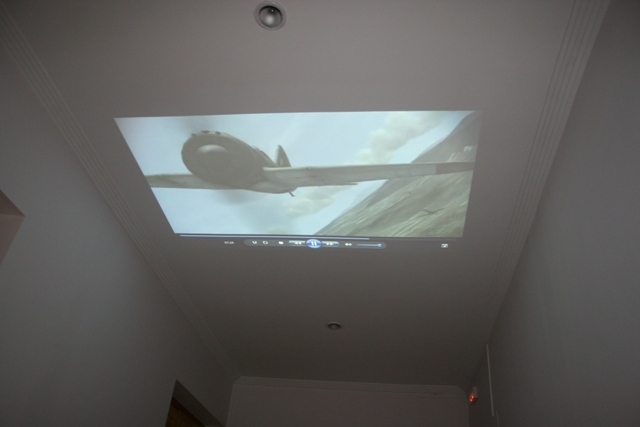 (San Javier): the rapid and decisive action of the personnel from Los Alcázares (the “Ortiz column”) in the early hours of 19th July 1936 decided the fate of Cartagena, the fleet and the whole of the maritime department.
(San Javier): the rapid and decisive action of the personnel from Los Alcázares (the “Ortiz column”) in the early hours of 19th July 1936 decided the fate of Cartagena, the fleet and the whole of the maritime department.
By the order of Commander Ortiz, the head of the aerodrome at the time, over a hundred aeroplanes based at Los Alcázares and La Ribera were enlisted as belonging to the government of the Republic. At the time this was the second largest air fleet in the country after that of Madrid.
From that moment on the Republican air force was organized around three main aerodromes: Barcelona, Los Alcázares and Madrid. The aerodrome at Los Alcázares was home to the Second Air Fleet, taking part in the struggle on the Eastern Andalucía front and in Teruel. From here reinforcements were also sent to Catalunya.
For strategic reasons workshops and staff from Getafe, Cuatro Vientos and Alcalá de Henares were stationed at the Burguete aerodrome, and another group welcomed by Los Alcázares was the Soviet aid package. This included the supply of aircraft (Polikarpov I-15 and I-16 fighter planes, Tupolev SB-2 Katiuska bombers and Polikarpov RZ Natacha and R-5 Rasante bombers), advisors and specialists in organizing forces, preparing operations and training pilots.
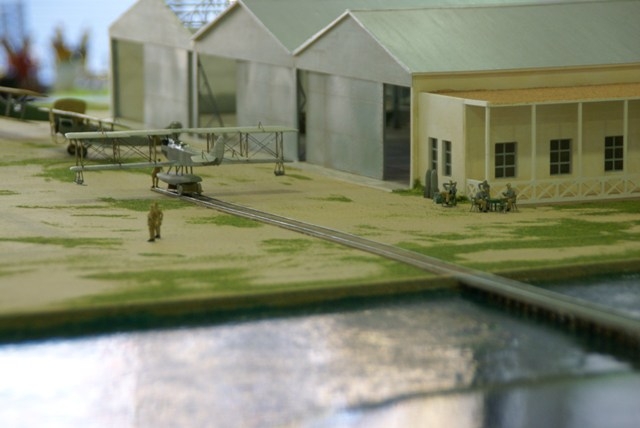 The distance of the coastline of Murcia from the main battle fronts meant that Los Alcázares was not ideal as an operations base but made an excellent logistical and training centre. For this reason, alongside the aerial combat and bombing school which had been training up the air force gunners and bombers since the 1920s, other training centres sprang up around Los Alcázares where Republican air force pilots were trained for combat.
The distance of the coastline of Murcia from the main battle fronts meant that Los Alcázares was not ideal as an operations base but made an excellent logistical and training centre. For this reason, alongside the aerial combat and bombing school which had been training up the air force gunners and bombers since the 1920s, other training centres sprang up around Los Alcázares where Republican air force pilots were trained for combat.
In 1937 the High Speed School was created in the nearby locality of El Carmolí with a twofold mission: firstly, to train the most outstanding pilots from the flying and combat schools to fly the Polikarpov I-16 fighter plane, and secondly to re-train those Spanish pilots who had been trained in flying schools in the USSR.
In the same year the Night Flying School was founded, sharing the aerodrome with the High Speed School, and in this school the aircraft used were mainly Dutch Koolhoven FK-51 biplanes.
These flying schools boasted an impressive list of leaders and teachers, including Isidoro Jiménez, Francisco Alarcón, Justo García, Ramón Castañeda, Mariano Palacios and Francisco Celdrán.
The war ended in Los Alcázares in much the same way as it had started: personnel from the base stifled the last attempted coup, the Cartagena rebellion of 5th March 1939. After this the aircraft and pilots remaining faithful to the Republic flew abroad, while in La Ribera they were sabotaged in order to prevent them from doing so.
( Editor’s own note. An interesting point to note is that the airbase itself was never bombed throughout the war. This has been attributed to the fact that many of those flying the bombers had actually first learnt to fly here and the pilot’s own code of honour and sentimentality prevented them from deliberately bombing it during the war. )
IV. THE SEARCH FOR A NEW ROLE AFTER THE WAR
In October 1939, after the end of the Spanish Civil War, all military aviation in the country was united in the new Air Force, and this meant significant changes for the aerodrome at Los Alcázares. For a variety of reasons, perhaps including its actively Republican stance during the conflict, the reduced dimensions of the airfield and its proximity to the La Ribera base, it fell into decline. The aerodrome was no longer considered apt for flying and many of the infrastructures such as hangars and workshops were dismantled. Gradually all aeronautic activity disappeared, and with it was lost a great tradition of training and teaching.
Temporama
1915. Seaplane port in Los Alcázares.
12th December 1915, Los Alcázares. First military seaplane flight in Spain.
1916-1921. Seaplane School
1920-1921. Elementary Pilots School
1921-1939. Aerial Combat and Bombing School.
Base for the Peninsula Seaplane Group, known as Nº 6 Seaplane group from 1931 onwards.
Base for the Y-2 Advanced Training Fleet (Instruction Service)
Home to the South-Eastern Regional Materials Deposit (Materials Service)
1934-1939. Burguete Aerodrome (Decree of 29th January 1934)
1936-1939. Home to the Second Air Fleet
High Speed and Night Flying Schools (El Carmolí)
1941-1950. Armed Officers Academy for Aviation Troops
1944-1951. 52nd Seaplane Group Base
1951-1970. Air Force Non-Commissioned Officers School
1969-1979. Elementary Co-Pilots School
1972-1979. Air Force Military Instruction Centre (IMEC-EA)
1980-1986. Selection Centre for Candidates to the General Air Academy (C.S.A.G.A.)
1986-1995. Air Force Drilling, Security and Defence Centre (C.A.S.Y.D.)
1995- (…). Los Alcázares Air Barracks
More Los Alcázares information in the dedicated Los Alcázares section, accessed via the map box at the bottom of every page. Los Alcázares falls within the Mar Menor area.





































